|
Looking at the following graph you can see that decreasing the baffle length (and subsequent cone angle) causes a gradual increasing of powerband. (In this example I am considering that the main powerband is the RPM range in which the power begins at 1.7 and ends at 2.2.) A shorter baffle yields a gain in peak power with the sacrifice of powerband length and power before the engine gets "on the pipe" (in the pipe powerband). I almost didn't even list the baffle angles because what matters the most is the baffle length. The same length will have the same relative effect on both a 100cc engine and a 250cc engine. But the same angle will result in different lengths and different effects. 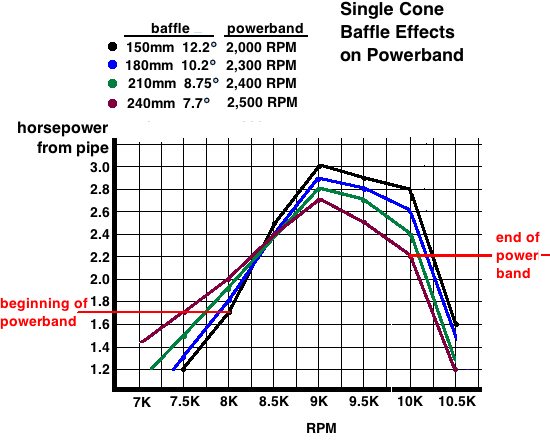 An easy way to extend the baffle powerband without losing too much kick at peak RPM is with an extended baffle which you can make by cutting your present baffle in two and then welding in a cylinder to match the diameter at the cut. 60mm long is usually about the right length for the extension. Make the cut at 55% of the cones length. (ie: if the baffle is 150mm long then cut it at 82.5mm) 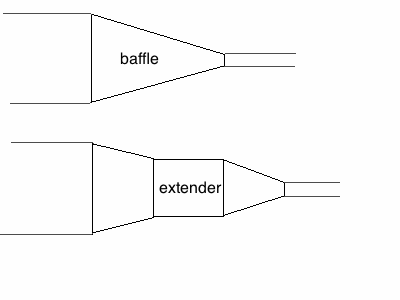 The pipe power graph below shows that a longer cone (with lesser angle) gives the broadest powerband but if you are converting a motocross bike into an enduro bike then it is easier to use a baffle extension than to fabricate a whole new baffle cone. Notice the more pronounced dip in power at 7000 RPM (1000 before the beginning of the powerband) of the short baffle. 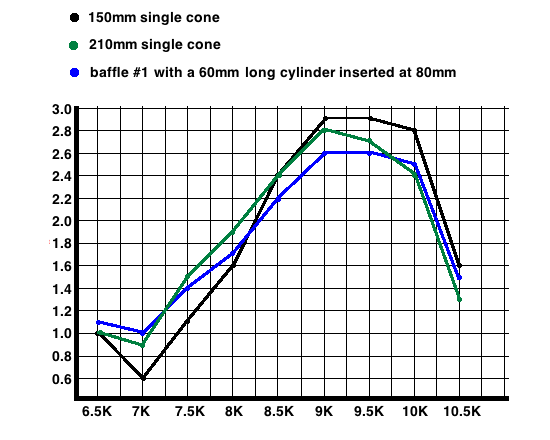 About a
year after I made this page
I found two examples of previous pipes with a different type of baffle
extension, the 1977
Husqvarna CR125 and the Kawasaki KDX200SR (international version tuned
more for street use). Here are their photos.The Husqvarna was sold for
use in desert racing, enduros, and motocross. The Kawasaki is for dirt
and street use. Note the straight section just before the stinger. 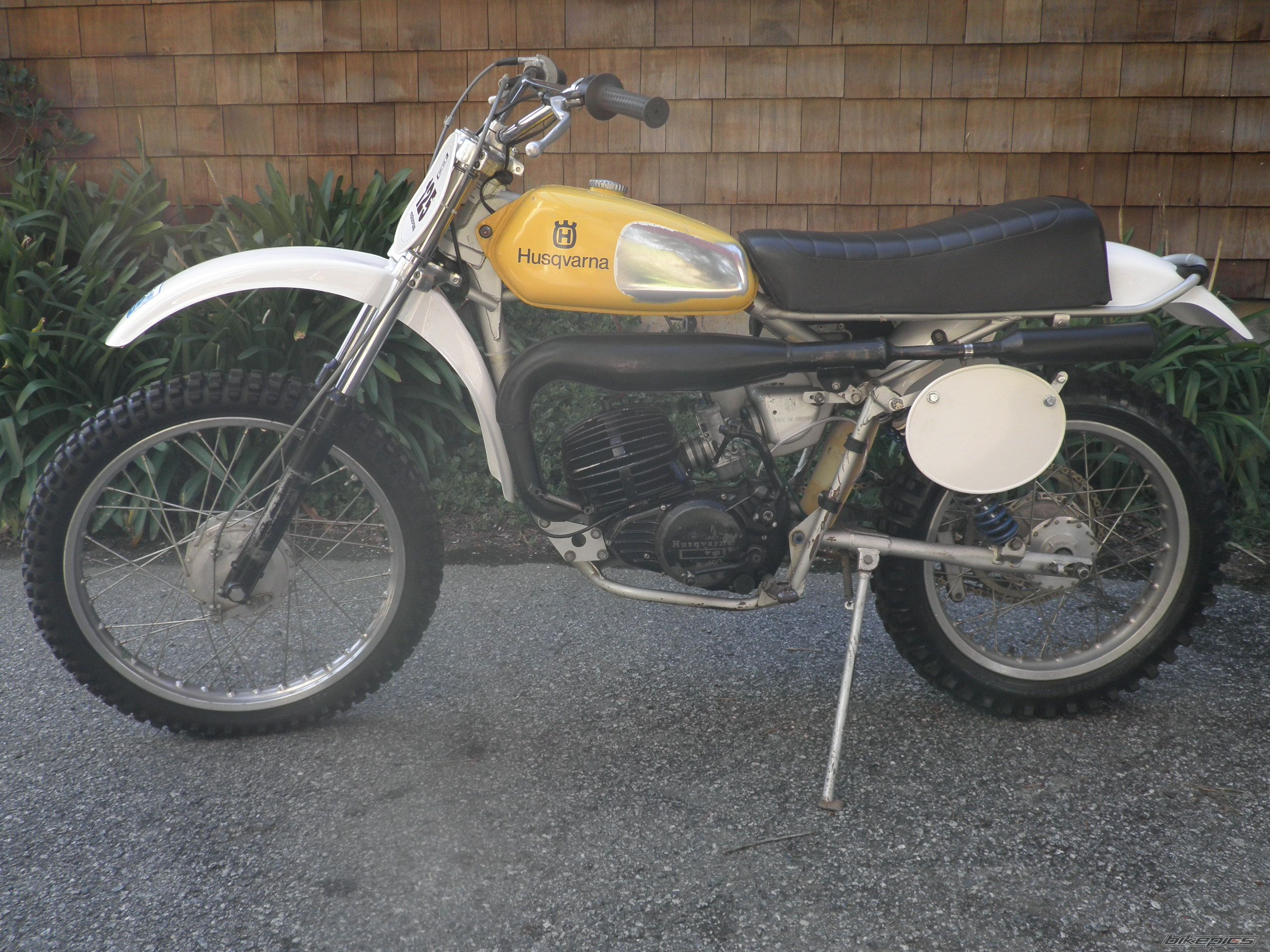 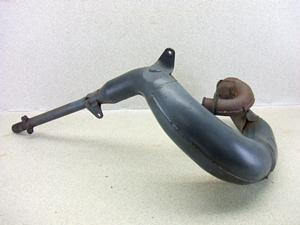
|